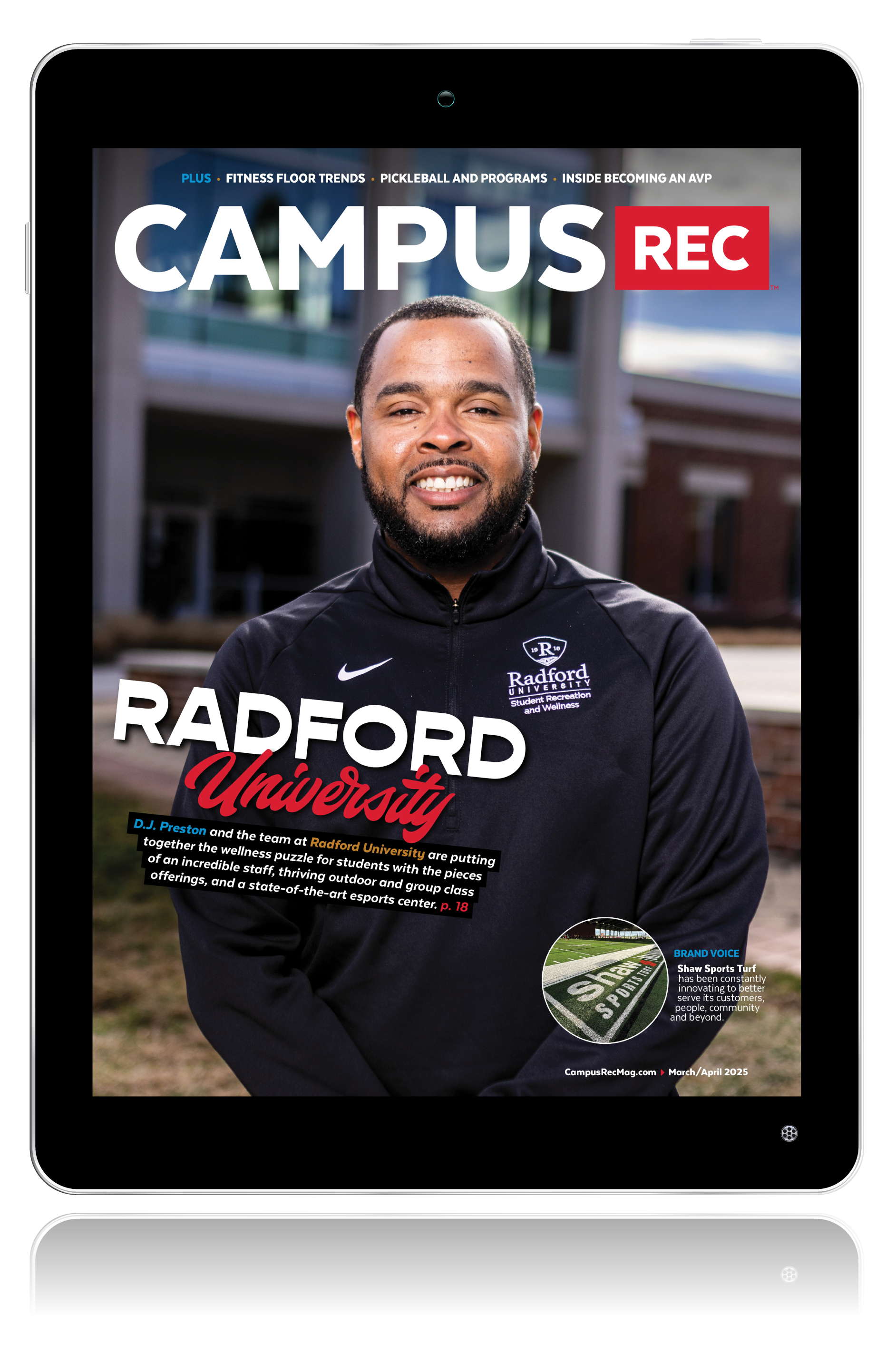Currently, Gen Z is about one-third of the U.S. population.
Defined by NIRSA as the cohort of students born 1997 and onward, campus recreation is in the early stages of serving this generation. “We are just figuring out what they are like,” said Lisa Molloy, the coordinator of Facilities and Aquatics at the University of Central Florida.
Molloy and Shelby Hinkle Smith, the senior associate director of Programs at the University of Vermont, both sit on the NIRSA Assembly and have done extensive research concerning Gen Z. With the growing number of students coming from that generation, it’s essential to begin understanding how they are different from the students before them.
To start, Smith listed the general characteristics of Gen Z she has come across in her research: optimistic, individualistic, financially conscious, progressive values, skeptical of authority, risk-averse, diverse, digital natives and thrive in order but welcome change.
She also noted they are different from previous generations in a variety of ways. Since they are financially conscious, more are balancing academics and a job. Wellness services are and will be a factor for them, too. But, one thing campus rec professionals need to keep in mind is that communication and organizational skills are lacking. “Gen Z students are coming to campus less prepared than their predecessors,” said Smith. “Therefore, a lot of personal development needs to happen during the college experience. Students will need more guidance on a range of issues, one of which is wellness.”
One way to bring students into that wellness mindset is through the programs you offer. Molloy shared two programs that have done well with drawing Gen Z into the rec center are Napercise and Yoga Nidra Meditation, complete with hammocks. Both types of classes allow students to come in, stop and rest, and then be rejuvenated for the rest of the day, either through a 30 to 45-minute meditation or nap session.
Molloy mentioned diversity is going to be a large influencer as well. Gen Z wants an inclusive mindset, and in order to draw them into the campus recreation world, it will have to be reflected you are diverse and inclusive in your staff, programs, etc. “I think being very intentional and strategic about how you show your diversity, inclusivity and equity really connects with this generation,” she explained. “When your staff reflects what Gen Z wants to see, then you’re going to have them inside your building, inside your student employment positions, and you’ll really live out that mission for diversity and equity.”
So far, Smith has seen some trends in terms of programming. First, there is an increased interest in working out with weights and machines. As such, Vermont has invested in updating its platforms and racks. Strength training opportunities, like Les Mills BODYPUMP, have been another draw, as well as meditation/yoga programs like Molloy mentioned. Finally, there has been a decrease in intramural sports program numbers. “We added a drop-in sports program which, on a nightly basis, we offer two hours of one to two specific activities for free,” said Smith. “This helps provide accessible opportunities — i.e. no gender rules, free — to students with less commitment than a traditional league sport requires.”
For Molloy, an important question to ask with this generation is, “Are we delivering the college experience on the level of technology these students like and want?” Esports and gaming, whether a club or a special event, allows the campus rec department to connect with Gen Z in their own language. Molloy said as an industry it would be helpful to embrace this realm as something new Gen Z will continue to enjoy.
While you have the offerings they might want, there are a couple more things to keep in mind to get Gen Z students into your facility. First, Smith said they seem to respond more to social media posts that include photos of themselves and/or other students, as well as funny meme-based posts that incorporate pop culture. Second, the rec center needs to be open late into the evenings to accommodate their busy schedules.
In the end, it’s about meeting Gen Z where they’re at. Molloy noted it’s essential to be positive with this generation. She encouraged professionals to take these challenges with a can-do attitude and be accepting of the change.
As Smith noted, this generation is possibly one of the unhealthiest. However, they know they need to exercise and move, so being multifaceted and adaptable as an industry just might give them the tools to accomplish it. And that could impact generations to come.
“We need to be sure to educate these students on the benefits of exercise, how to create habits related to exercise, understand what types of exercise and programming they are interested in, and then get them in the door on a regular basis,” said Smith.










